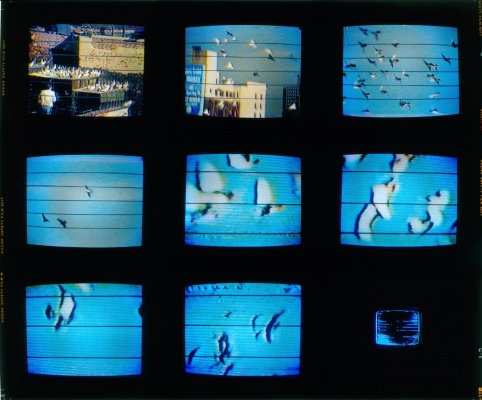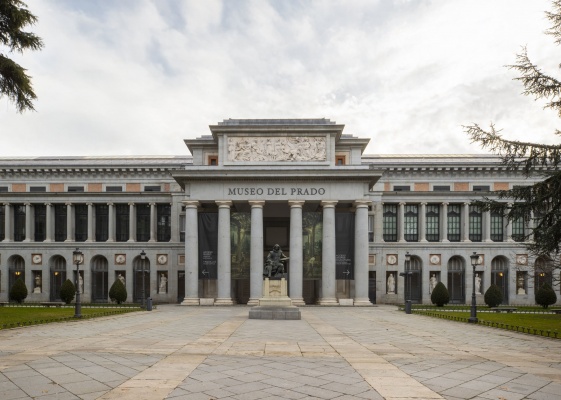Descripción de la Exposición
Abraham Lacalle (Almería, 1962), uno de los principales representantes de la pintura española contemporánea, inaugura la segunda temporada de WE COLLECT London con “Forests”, su primera exposición individual en la capital británica, que podrá visitarse del 16 de septiembre al 25 de octubre de 2019.
Compuesta por una selección de obras de sus últimos trabajos en gran y pequeño formato, lienzo y papel, la muestra presenta al público británico un recorrido por su obra más reciente. A lo largo de su trayectoria, Lacalle ha intentado de manera recurrente transformar sus vivencias y experiencias en pintura. “Los bosques siempre me han fascinado, dedico mucho tiempo a pasear por el campo. Las sensaciones que te va generando un paisaje, todo el relato de pensamiento que tienes en un paseo de tres horas y como va tu cabeza interiorizando todo es algo único y algo muy personal”, comenta el artista.
Su proceso comienza con acuarelas, tintas, dibujos, etc., que tras un largo proceso reflexivo van tomando forma en lienzos y papeles. Un largo proceso de correcciones, adiciones y sustracciones que va midiendo el ritmo de trabajo. “Estoy intentando llevar la pintura a una situación extrema, saturada, donde la figuración está brutalmente sobredimensionada. El color y las formas se amontonan. No son nada, pero tienen algo de energía sexual. Radicalmente diferenciados, formas y colores, se funden en un solo elemento, que es el cuadro”, asegura Lacalle. El color es otro de sus elementos más reconocibles: “Mi obsesión por el color viene de lejos. Antes mis cuadros dependían más del dibujo pero ahora con el color cuento muchas más cosas, cada vez más construyo las formas con masas de color”. Con múltiples referencias a la historia de la literatura como gran amante de las letras, el tema del paisaje ha sido algo muy recurrente a lo largo de su trayectoria. “El corazón de las tinieblas”, de Joseph Conrad, un viaje al centro del bosque donde uno encuentra el lado más brutal y primitivo del hombre, o “La carretera”, de Cormac McCarthy, son influencias literarias que recuerdan al artista sensaciones ya vividas. “Parece contradictorio, pero a veces el bosque se convierte en ciudad. La soledad del bosque hace que paradójicamente sea muy fácil observarte y vigilarte, porque si tú te escondes el otro se esconde también”.
La obra de Abraham Lacalle se ha podido ver en diferentes exposiciones en importantes museos y galerías nacionales e internacionales, como “Recent paintings”, Marlborourough Nueva York (2019); “El despertar (Landscapes after the battle)”, Nova Invaliden Galerie, Berlín, Alemania (2016); “Incendios”, Galería Marlborough, Barcelona (2016); “Pintura bélica”, CAAM, Las Palmas de Gran Canaria (2015); “Tríptico de Málaga”, CAC Málaga (2015); “Bandini Baker, The Spanish Sindicate”, Track 16 Gallery, Santa Monica, California, EE.UU. (2011); “Abraham Lacalle”, Marlborough Gallery Chelsea, Nueva York, EE.UU. (2008); “Abraham Lacalle, Un lugar donde nunca sucede nada”, MNCARS (Espacio Uno), Madrid, (2005); “Pinturas de ida y vuelta”, Marlborough Chelsea, Nueva York, (2004). Su obra forma parte de las colecciones del Centro Andaluz de Arte Contemporáneo (Sevilla), el Museo de Arte Moderno y Contemporáneo (Palma de Mallorca), la Colección Santander (Madrid) o el Museo Nacional Centro de Arte Reina Sofía (Madrid), entre muchas otras.
-------------------------------------------------
Comprised of a selection of his last works in big and small format, canvas and paper, the exhibition offers the British public a journey through his most recent work. Throughout his career, Lacalle has repeatedly tried to transform his experiences and sensations into painting. “The forests have always fascinated me; I spend a lot of time walking through the countryside. The sensations that a landscape generates in you, all the thoughts you have in a three-hour walk and how your head internalizes everything is something unique and something very personal” says the artist.
His process begins with watercolours, inks, drawings, etc., which after a long reflective process start to take shape in canvases and papers. A long process of corrections, additions and subtractions that measure the pace of work. “I am trying to bring the painting to an extreme, saturated situation, where the figuration is brutally oversized. Colours and shapes pile up. They are nothing, but they have some sexual energy. Radically differentiated, shapes and colours, merge into a single element, which is the painting” says Lacalle. Colour is another of his most recognizable elements: “My obsession with colour comes from long ago. Before my paintings depended more on the drawing but now with colour, I tell many more things, more frequently I build the forms with masses of colour.” With multiple references to the history of literature as a great lover of literary works, the theme of the landscape has been something very recurrent throughout his career. "Heart of Darkness", by Joseph Conrad, a trip to the center of the forest where one finds the most brutal and primitive side of a man, or "The Road", by Cormac McCarthy, are literary influences that remind the artist of feelings already lived. “It seems contradictory, but sometimes the forest becomes a city. The solitude of the forest makes it paradoxically very easy to observe and watch over you, because if you hide the other one also hides.”
Abraham Lacalle's work has been seen in different exhibitions in important national and international museums and galleries, such as "Recent paintings", Marlborourough New York (2019); “The Awakening (Landscapes after the battle)”, Nova Invaliden Galerie, Berlin, Germany (2016); “Fires”, Marlborough Gallery, Barcelona (2016); “War Paintings”, CAAM, Las Palmas de Gran Canaria (2015); “Tríptico de Málaga”, CAC Málaga (2015); “Bandini Baker, The Spanish Sindicate”, Track 16 Gallery, Santa Monica, California, USA (2011); “Abraham Lacalle”, Marlborough Gallery Chelsea, New York, USA (2008); "Abraham Lacalle, A place where anything happens", MNCARS (Espacio Uno), Madrid, (2005); "Round Trip Paintings," Marlborough Chelsea, New York, (2004). His work is part of the collections of Centro Andaluz de Arte Contemporáneo (Sevilla), el Museo de Arte Moderno y Contemporáneo (Palma de Mallorca), la Colección Santander (Madrid) or el Museo Nacional Centro de Arte Reina Sofía (Madrid), among many others.

Exposición. 08 may de 2025 - 14 sep de 2025 / MNAC - Museu Nacional d'Art de Catalunya / Barcelona, España

Formación. 30 oct de 2025 - 11 jun de 2026 / Museo Nacional del Prado / Madrid, España